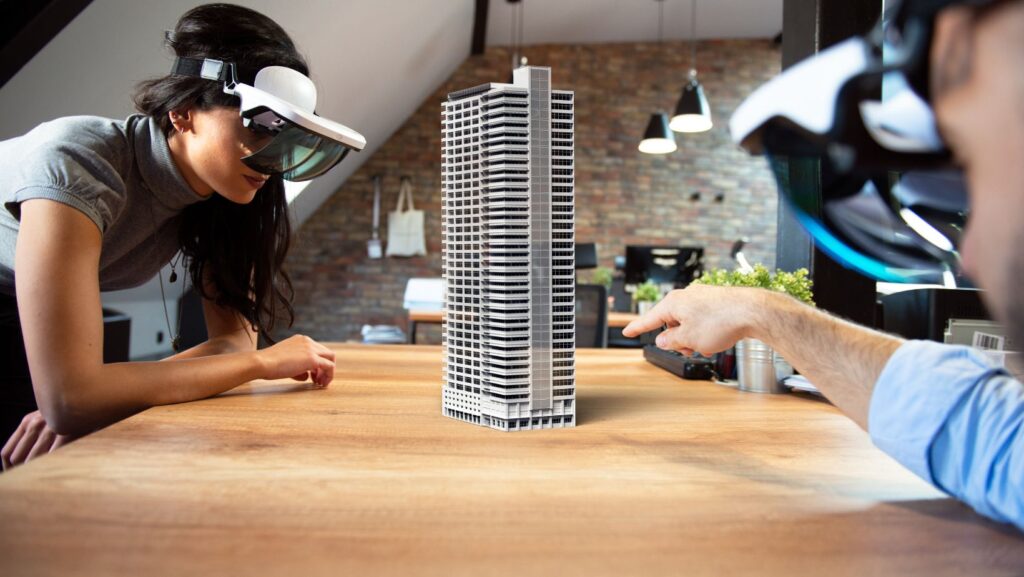With so much emphasis on the internet and technology, many discussions and topics are dedicated to it. Of course, when it comes to most technological tops, artificial intelligence and virtual reality get most of the press. However, in recent years, augmented reality has continued to make massive improvements, especially in the gaming and educational fields. If you’re new to the augmented reality experience, please consider this guide as your stepping stone to see its current impact and promising future.
The Evolution of Augmented Reality (AR)
Believe it or not, the concept of augmented reality has its roots in the 1960s when the first wave of computer mainframes and computer chips entered businesses. Although the official term “augmented reality” did not come about until the 1990s, it is greatly believed that the first official display of augmented reality came in the late 1960s with the “Sword of Damocles” head mount display.
However, it wouldn’t be until the 1990s when scientist and construction company owner Tom Caudell wanted to develop a system to better aid his workers. The concept of augmented reality was to quickly and effectively display work instructions in working environments to aid his workers.
It didn’t take long for the United States Air Force to tap into augmented reality’s immense potential. The prototypes were used to have graphical overlays to help pilots so they can focus on the task of flying.
Come the 2000s, augmented reality technology to a massive leap with the rise of the mobile phone industry. Customers got a new look of powerful text and fonts over images, which sent the world of augmented reality into exciting new directions.
In 2008, the company Layer introduced augmented reality technology to its mobile apps. The app’s concept was to use the built-in camera to superimpose and overlay images and other graphics with the selfies. As this technology improved, mobile phone users were able to superimpose enhanced images in their live streams.
With augmented reality becoming a household name, the video game industry didn’t take long to hop on its immense talent. First person shooting games integrated augmented reality in the gameplay to provide enhanced environments with the twist of virtual environments overlayed in their real-life settings.

By the end of the 2000s, Google introduced technology for app developers to experiment with creating Google and Android apps with augmented reality technology. Today, in the era of 5G technology, augmented reality is used in virtually everything, including for e-commerce, to show variants of different styles.
How Augmented Reality (AR) Works
Unlike virtual reality, which takes players into a virtual environment to feel real, augmented reality blends elements of a virtual reality into a real-life environment. To make the simulated magical backgrounds work, augmented reality relies heavily on different high-performing hardware systems. To get a better grasp of the inner pinning of augmented reality, consider these fundamental points:
1. Heavy Use of Cameras and Sensors: To combine this fine-tuned graphical overlay system, augmented reality heavily relies on different camera systems. These cameras capture and track real-world environments in real-time to gauge the best location for the graphical overlays to play. With various depth sensors, augmented reality can gain further angles and different depths of real-world environments.
2. AR Displays: The earliest forms of augmented reality technology used special headsets to create the seamless graphical overlays over environments like in the living room. With the rise of smartphones, tablets, and Google glasses, augmented reality technology is fed directly into the hardware.
3. Real-Time Rendering: With sophisticated hardware and computer chips in smart devices and computers, augmented reality technology can seamlessly blend 3D rendering in real-time. This feature is used heavily in today’s video games to create fluid and dynamic backgrounds.
Uses and Applications for Augmented Reality
From its humble origins, today, augmented reality is used in a variety of applications and real-world industries. Many in the education industry are using augmented reality to create interactive story lessons. Because many students learn visually, augmented reality is especially helpful in portraying geography lessons. Augmented reality is often used for students to pick different parts of the globe or the map to learn more about a location.
Many of the top retailers, especially online, use augmented reality to display beautiful different variations of their products. The tools are even advanced enough to allow customers to customize products to meet their liking.
For many in the healthcare industry, augmented reality is used to help surgeons perform complex surgeries. They can rely on these precise digital models to stay on task and for other essential notes while performing operations. For the Air Force and commercial pilots, augmented reality is used to help chart courses and for navigation.
The online gaming and iGaming industries continue to excel with augmented reality technology. To help the latest generation of console games load, augmented reality and artificial intelligence dynamically load the backgrounds and move objects according to the characters’ movements.

In the iGaming sphere, augmented reality is used in big time for live dealer play. The fiat and new sweepstakes casinos use augmented reality to let players choose different spots on the screen to place their bets. This clears up confusion for the host and works to keep the games on schedule.
The Future of Augmented Reality (AR)
The ultimate aim of augmented reality is to seamlessly blend the real world with virtual reality with next to no distinction. This is especially so with handless tech and gear like Augmented Reality eyewear and voice commands. For those who wear contact lenses, augmented reality continues to be heavily embedded in these lenses, making it easier to blur the lines between the technologies.
The final frontier for augmented reality is for users to actually feel sensations and react to the virtual environments like they would in a real-world scenario. For social clubs, augmented reality continues to be the glue that helps friends across networks hook up and interact through overlays.

